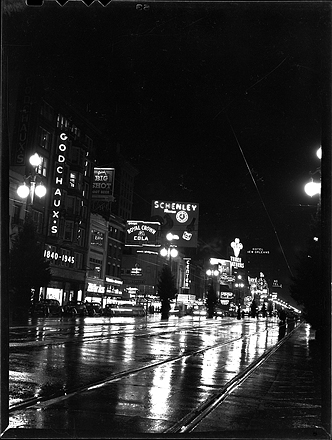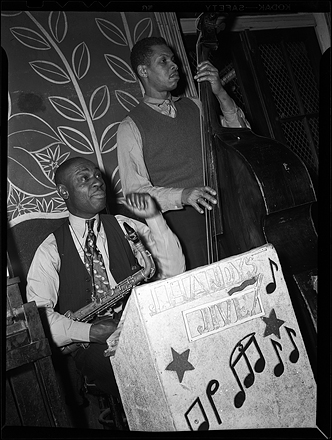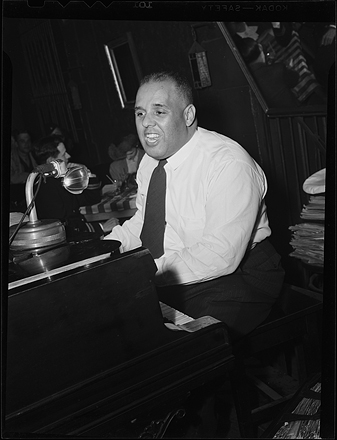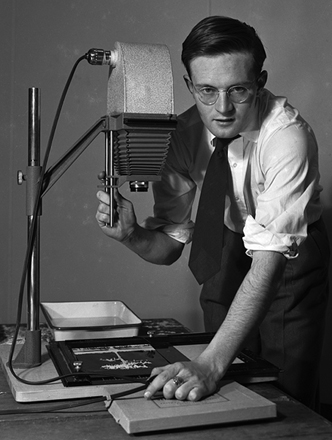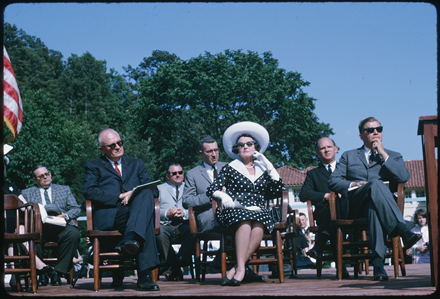
Tomorrow, Thanksgiving Day, marks the forty-fourth anniversary of the assassination of John F. Kennedy. Six months after his death, on Sunday, 17 May 1964, the state of North Carolina held a memorial service for Kennedy in Kenan Stadium on the University of North Carolina at Chapel Hill campus.
In an effort to raise money for the Kennedy presidential library, “a living memorial,” each state pledged to raise funds. Governor Terry Sanford set the state’s goal at $230,000 (the eqivalent of $1.5 million in 2007 dollars), and Hugh Morton chaired North Carolina’s fund raising effort. An estimated 12,000 people attended the memorial, paying $10.00 (about $65.00 today) to attend and contribute toward the goal. As the date drew near, the governor announced that students were to be admitted free of charge because it was determined that sufficient contributions from the community had been raised. The News and Observer noted in its report the following day that no other state in the country had yet to raise money by public subscription, and that eighty percent of the state’s goal had been met.
The memorial featured a tribute by Billy Graham and addresses by Governor Terry Sanford; Luther H. Hodges, former North Carolina governor and then current United States Secretary of Commerce; and Senator Edward Kennedy, brother of John F. Kennedy. In the photograph above, Rose Kennedy, mother of the former president, is seated on the platform with Hugh Morton (left) and Terry Sanford (right). There are several slides of the event in the collection, but the photographer is unknown.
Category: Biography
Amazing trick photography!
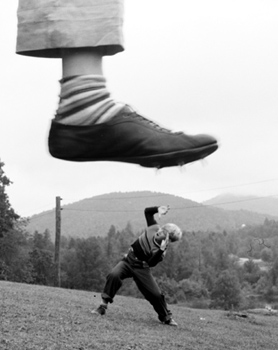 This is one of the more amusing shots I’ve come across so far in the Morton collection (I cropped the version at left for maximum effect). The picture was taken sometime during Hugh’s days at Camp Yonahnoka, where he took his first photography course in 1934 and served the following five summers as the camp’s photography instructor. It’s a good example of Morton’s appreciation for visual humor, something I’ve noticed throughout the collection.
This is one of the more amusing shots I’ve come across so far in the Morton collection (I cropped the version at left for maximum effect). The picture was taken sometime during Hugh’s days at Camp Yonahnoka, where he took his first photography course in 1934 and served the following five summers as the camp’s photography instructor. It’s a good example of Morton’s appreciation for visual humor, something I’ve noticed throughout the collection.
See below for the uncropped version, which shows how this mind-blowing “feat” of perspective was achieved. (Zing!) Just goes to show that some things—including puns—will never stop being funny.
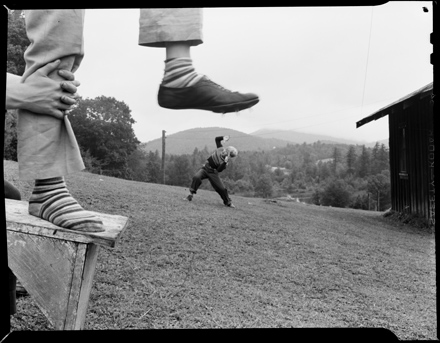
Morton the environmentalist
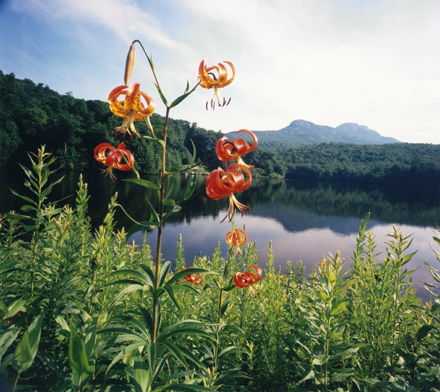 When my good friend who works for the Nature Conservancy in NC heard that I was going to be working on the Morton photos, she could barely contain her glee. Hugh Morton, you must understand, is somewhat of a rock star in environmental and land conservation circles. This lovely eulogy by Morton’s good friend and Appalachian State professor Harvard Ayers (a former professor of mine, actually!) details Morton’s legacy and contributions in these areas—donating thousands of acres of land on Grandfather, championing the Linn Cove Viaduct to “minimize the ecological impact of the Blue Ridge Parkway,” and making the influential 1995 documentary “The Search for Clean Air”—to name just a few.
When my good friend who works for the Nature Conservancy in NC heard that I was going to be working on the Morton photos, she could barely contain her glee. Hugh Morton, you must understand, is somewhat of a rock star in environmental and land conservation circles. This lovely eulogy by Morton’s good friend and Appalachian State professor Harvard Ayers (a former professor of mine, actually!) details Morton’s legacy and contributions in these areas—donating thousands of acres of land on Grandfather, championing the Linn Cove Viaduct to “minimize the ecological impact of the Blue Ridge Parkway,” and making the influential 1995 documentary “The Search for Clean Air”—to name just a few.
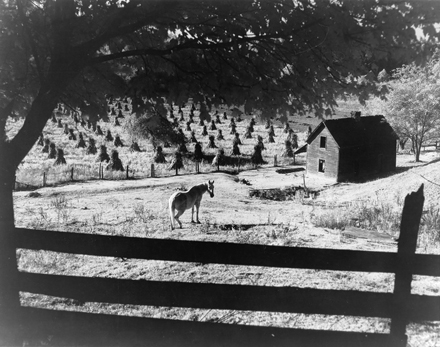 But Morton’s most powerful statements on behalf of nature were his photographs, which he used to great effect to show damage done by pollution and irresponsible development, to document rare and endangered species, and to capture rural life in NC. As these sample images illustrate, his eye for composition and remarkable ability to highlight natural features to their greatest impact made a stronger case for conservation than words could have.
But Morton’s most powerful statements on behalf of nature were his photographs, which he used to great effect to show damage done by pollution and irresponsible development, to document rare and endangered species, and to capture rural life in NC. As these sample images illustrate, his eye for composition and remarkable ability to highlight natural features to their greatest impact made a stronger case for conservation than words could have.
We would love to hear from people who worked with Morton on environmental causes or who saw him in action on this front. Did you attend one of his slide show lectures? When and where? What images stuck with you?
New Orleans, 1945
Why feature photographs made in New Orleans in 1945 by a North Carolina photographer? Because they are great examples of the hidden riches that await us! They also serve as good samples to explore the far reaches of blogging on the Internet as an aid in processing a photograph collection. Plus, Hugh Morton loved jazz.
The Daily Tar Heel, UNC’s student newspaper, ran an article on Sunday, 27 September 1942 about Morton’s return to campus to photograph the prior day’s football game for the paper before his Tuesday entrance as a technical sergeant in the Army’s photography division. The feature also noted that Morton reminisced on how he “got his start at Carolina by taking pictures of Hal Kemp, University alumnus.” James Hal Kemp (1904-1940), who attended UNC from 1922 to 1926 but did not graduate, was one of the most noted “sweet-swing” band leaders of the 1930s. (Kemp’s papers are in the Southern Historical Collections in Wilson Library). The article stated that Morton was so pleased with his photographs that, “He now has pictures of every nationally known band in the country with over 100 snaps of Benny Goodman, some of which have appeared in Downbeat, music magazine.” We’ll be keeping all four of our eyes open for those.
The photographs featured in this post are found in an envelope that contains twenty negatives and is labeled, simply, “New Orleans.” One of those negatives is a night scene looking down Bourbon Street. On the right is the The Old Absinthe House Bar and farther down the street is Club Bali; on the left is the Famous Door Cocktail Lounge. The automobile license plates on the right are dated 1945, confirming the date on Godchaux’s marquee in the image above.
What was happening with Hugh Morton in 1945? He was wounded in March, a few days after photographing General Douglas MacArthur reviewing the 25th Division on New Caledonia, and received his honorable discharge from the United States Army on 30 June. He married Julia Taylor on 8 December.
Within the batch of New Orleans negatives are a few outdoor scenes depicting a couple wearing longer coats, suggesting he was there during a colder time of the year. Duke University’s football team defeated the University of Alabama in the Sugar Bowl on January 1st. Perhaps Morton was there to photograph the football game? Thus far we’ve not located any negatives of that event. Maybe he was on leave? One negative depicts a group seated in a hotel room: Morton in civilian clothes, another man in a military uniform, and two women.
Whatever the date of his visit, Morton headed to the jazz clubs with camera in hand and he photographed three performances. Only one set is identifiable from the content: two negatives of Captain John Handy (1900-1971) and an unidentified upright bass player.
A second setting records another group, apparently a quintet, the only recognizable character being the bopping Santa above the stage backdrop. Santa says it might still be around New Year’s Day.
To round out the photographs of jazz musicians, here’s an unidentified piano player in what appears to be yet a third club setting:
Any jazz historians out there who can place a name to some of these unnamed faces?
From Grandfather Mountain to Chapel Hill
The life’s work of photographer Hugh Morton has a new home: the North Carolina Collection Photographic Archives in Wilson Library at the University of North Carolina at Chapel Hill. It took two trips in four vans filled to the gills to bring it all from the Morton residence near Grandfather Mountain to the university where Morton spent his freshman through junior years as a student. His enlistment in the United States Army in September 1942, at the outset of his senior year, pulled him away to the Pacific and on to what became a celebrated life, but he returned to the campus he loved time and time and time again—and likely always with his camera.
It’s also likely that Morton had his camera with him everywhere else he went. We all look for something to “click” in our lives; for Hugh Morton it was his cameras’ shutters. We think he clicked them about half a million times. It takes a lot of shutter clicks to fill four vans. Morton made many photographs and shot a lot of motion picture film, too. It will take a good deal of time—measured in years—to organize and make available for use the results of so much clicking. Sometimes I “shutter” just thinking about it.
There is so much interest in the Morton collection. The first inquiries started before we opened more than a handful of boxes. The time needed to make such a voluminous collection available compared to the demand for its use beckoned for a non-traditional approach to collection processing. The way it’s “supposed” to be done is to open the collection only once it is completed. To make material accessible as soon as possible, we are planning to make parts of the collection available incrementally as we complete them.
We also needed a way to keep people informed about our progress and offer glimpses into the collection’s wealth. We are enthused by the public interest and want to transform it into community involvement. So we developed this blog to meet those needs and we hope it “clicks” with you!

